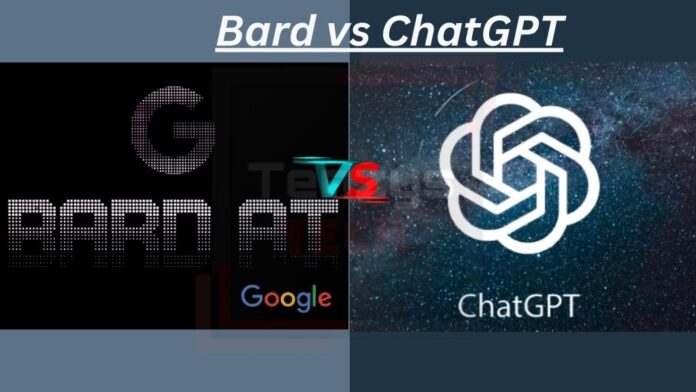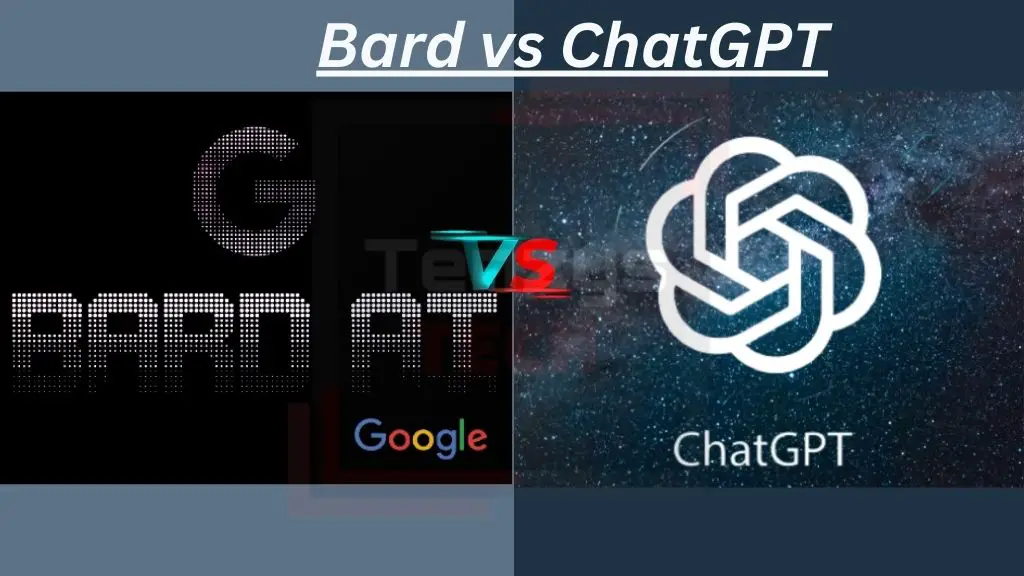When it came to AI-generated content, ChatGPT dominated, and Google responded with Bard. There are variations between Bard vs ChatGPT despite the fact that they could carry out comparable activities.
In November 2022, OpenAI’s ChatGPT was live, and it soon gained popularity online. In a duel between the digital behemoths, Google has now unveiled its own AI-powered chatbot.
After receiving a query from a user, generative AI uses data from its machine learning model to produce new content. To provide answers to queries and produce photos, texts, or videos made by AI, the material is generated automatically.
People started seeking methods to employ AI-generated content and AI technology for professional, educational, and personal objectives when OpenAI released ChatGPT. However, AI specialists cautioned that when the data is retrieved from the wrong data sources, it may muddle the content. There are benefits and drawbacks to generating content.
In order to improve AI capabilities, Microsoft has unveiled multiyear cooperation with OpenAI.
The conversational AI chatbot dubbed Bard is Google’s response to ChatGPT, according to Alphabet, the parent company of Google.
The two AI technologies differ significantly from one another despite sharing many comparable features.
What is ChatGPT?
An AI-powered chatbot called ChatGPT employs machine learning to respond to questions in a natural conversation. On November 30, 2022, OpenAI made ChatGPT available. According to Sam Altman, CEO of OpenAI, ChatGPT gained a million users in just five days.
The term “GPT” refers to a pattern-finding algorithm that analyses data sequences. Currently, ChatGPT employs the GPT-3.5 language model, which was trained using text written by humans and posted online. The improved GPT-4 model is currently used by the premium version, ChatGPT Plus. The AI language model is used by ChatGPT to create replies to user inquiries.
Popular AI-generated content for ChatGPT includes the following:
- Written code.
- Product descriptions.
- Blog posts.
- Email drafts.
- Summaries of transcripts, meetings, and podcasts.
- Simple explanations of complex topics.
- Law briefs.
- Translations.
- Jokes or memes.
- Social media posts.
Concerned about ChatGPT delivering persuasive writings, academics and teachers pondered how to deter students from cheating. In response, OpenAI in January 2023 unveiled a new AI text classifier.
What is Bard?
Another AI-powered chatbot is Google Bard, which uses answers from the internet to replicate human interactions using natural language processing and machine learning. Bard updated Google’s PaLM 2 (Pathways Language Model), a next-generation language model, from LaMDA for conversation applications. According to a blog post by Google, this model is superior to prior models in terms of logic, mathematics, and common sense thinking. The manufacturer added that the new device is quicker than earlier iterations. Through this extensive language model, Bard answers queries in greater depth than the ordinary Google search.
Similar to digital assistants like Alexa and Siri, Bard’s major objective is to obtain information in a straightforward response rather than a search engine results page, but with links for consumers to find out more. Bard also works as a personal assistant, helping with things like making reservations, scheduling vacations, and meal preparation. In contrast to search engine terms, Bard employs more natural language or conversational search queries. In 180 nations, Bard is open to the public and provides information in three languages.
The Key Differences Between ChatGPT and Bard
There are a few small variations in feature sets. It’s cool for a hands-free experience because Google Bard allows you to deliver suggestions through voice utilizing the microphone on your device. Additionally, it provides a simple “Google it” option that provides in-line connections to carry on your study anywhere besides Bard.
Bard also has a cool feature called “draughts.” It will present you with various draughts, or iterations of replies, each time you submit a query and begin a discussion with Bard. It’s a practical technique to narrow down your choices after considering a variety of possibilities. Additionally, I appreciate how Bard shows past requests. You may view the specifics of each of your prompts by selecting “Bard activity,” or you can choose to remove them from your history.
Users enter a question to get a human-like answer with both ChatGPT and Bard’s services.
Microsoft has revealed that it would make technology available in February 2023 that will allow big businesses to design and build their own chatbots using ChatGPT technology. Additionally, Microsoft will incorporate chat functionality and AI-powered search features into its Edge browser and Bing search engine to help users. When Google will integrate chatbot capability into its search engine is yet unknown.
The data source is the primary distinction between ChatGPT and Bard. Bard regularly accesses the internet for information, ensuring that everything is up to date. The sources used by ChatGPT are restricted to information from 2021, therefore it lacks more recent data and analysis. By using the most recent research, Bard has access to more data and can obtain insights instantly.
Bard employs PaLM 2, the most recent language model from Google. With GPT-4 technology available in its premium edition, ChatGPT Plus, leverages GPT-3.5.
Bard generates more material in larger chunks, whereas ChatGPT generates content in response to a single text query.
Let’s light up the general knowledge differences Between BArd and ChatGPT:
| ChatGPT | BARD | |
| Creators | OpenAI | |
| Language model | Depending on the version, a particularly modified version of OpenAI’s Generative Pre-training Transformer 3 (GPT-3) or Generative Pre-training Transformer 4 (GPT-4). | LaMDA, a language model for dialogue applications developed by Google |
| Data sources | ChatGPT was trained on a vast corpus of text that included Common Crawl, Wikipedia, books, articles, papers, and information scraped from the public internet; however, its sources expire in 2021, restricting access to the most recent global news and scientific research. | Bard is said to search the web in real-time to locate the most recent solutions to queries and the most recent research since it was trained using Infiniset, a data set that includes Common Crawl, Wikipedia, documents, and chats and dialogues from the online. |
| Pricing | All users of ChatGPT can use it for free, however ChatGPT Plus costs $20 per month and offers access during peak hours, quicker response times, priority access to new features, and usage of GPT-4. | Users with access can use Bard without charge. |
Which chatbot is better?
Since they are both still in their early stages of training, it is difficult to say which chatbot is superior at this time. Text requests may be generated and summarised effectively with ChatGPT. Bard does a better job of providing material that is more pertinent to the queries asked. As consumers provide input, these chatbots are still being trained so that adjustments might be made.
Generative AI alternatives
There are further AI content producers on the market. Additionally, a number of startups are working on their own initiatives, including Wordtune, ChatSonic, Jasper, and Open Assistant. Baidu, a Chinese search engine, also employs AI in its Ernie Bot application.
As swiftly as it began, AI in marketing is still evolving and finding new applications in customer support, email optimization, product suggestions, and social media postings, among others.



